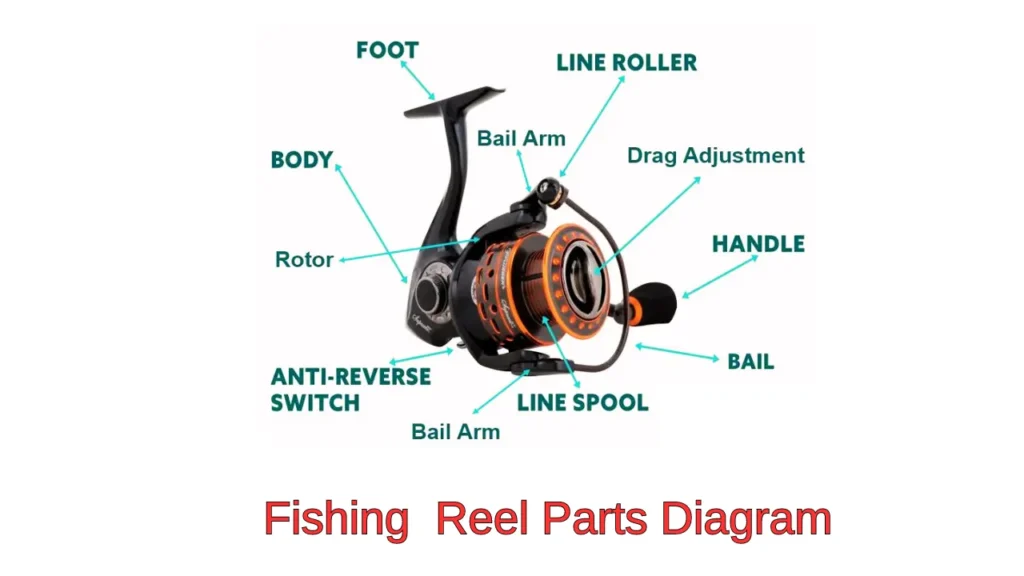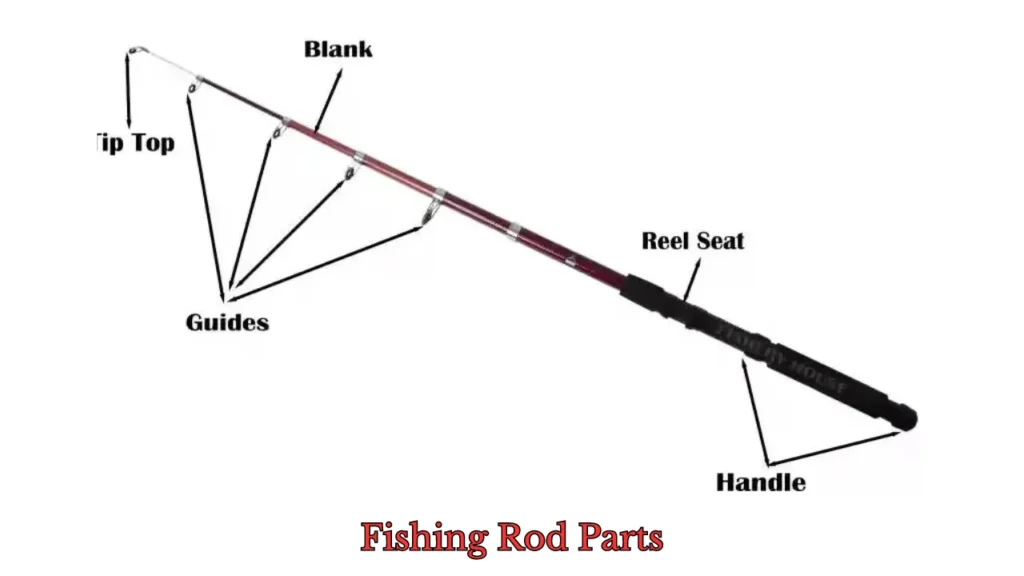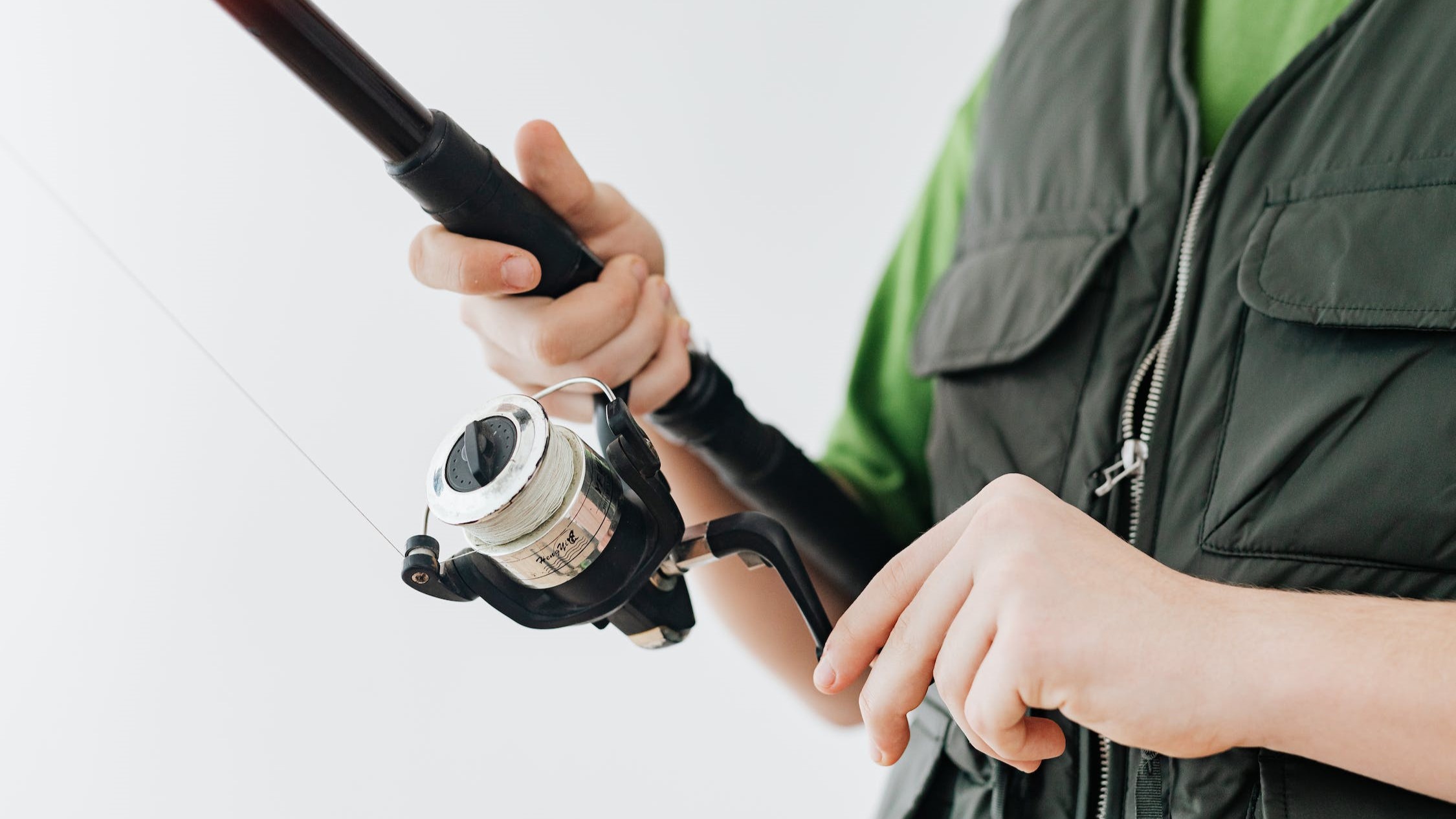How to Setup Fishing Rod and Reel
Are you frustrated with the tedious process of How to Setup Fishing Rod and Reel and learning how to use your spinning rod and reel? If so, have no fear! We will show you everything you need to know about your spinning rod and reel. Although it is initially difficult to set up and use, the spinning rod and reel will enhance your fishing abilities and will give you the versatility you need to catch nearly any kind of fish.
With no previous knowledge or skill on spinning rods and reels,It will take you approximately 30 minutes to complete. However, with a little more experience, setting up your rod and reel will take you just 10 minutes of your time.
Step 1: Gather Your Equipment

Spinning Reel
- If you have not purchased your spinning reel, you should first research what kind of reel will suit your needs
Spinning Rod
- Often times spinning rods will be designed to go with specific reels. So, I would recommend that you go into your local fishing store to ensure you get the rod that you need
Fishing Line
- The type of fishing line you will use is fully dependent upon what type of fish you are fishing for.
- The type of bait you should use also depends on what you are fishing for. Research this before you go fishing.
- Tip: Bring multiple types of bait when fishing, as fish will prefer different baits on different days
Scissors
- No research here! Any kind of scissors will work
Step 2: Understand the Important Parts of the Equipment

The Fishing Reel Parts
- Spool
- The spool is what the fishing line is wound around
- Handle
- When the handle turns, a line is forced back into the reel
- Bail
- The bail is a metal arm that can stop the line from coming out of the spool
- When “closed”, little to no line can come out of the spool
- When “open”, the line can come out of the spool freely
- Reel Foot
- The reel foot is like a puzzle piece that firmly connects the rod to the reel
- Drag Knob
- The drag knob allows you to set how easily the line can come out of the spool when the bail is closed
- When they know is “tightened”, the line cannot come out of the spool with the bail closed
- When the knob is “loosened”, the line can come out of the spool with very little force applied when the bail is closed
- Line Roller
- The line roller accurately guides the line from the spool to the rod

The Fishing Rod Parts
- Rod Tip
- The tip is the last 4 inches of the rod and is the thinnest part of the rod to help you feel when a fish bites
- Caution: Be aware of where the tip of your rod is, as it is the easiest part of the rod to break
- Guides
- Guides are circles that the line passes through and are there to keep the line close to the rod
- Reel Seat
- The reel seat is the other “puzzle piece” that the reel foot connects to that secures the reel to the rod
- Handle
- The handle is often made up of a softer material than the rod, as it is what you will be holding the entire time you are fishing
Step 3: Connect the Reel to the Rod
1. Loosen the reel seat (on the rod)
- Make the real seat big enough so the reel foot can fit
2. Place the reel foot into the reel seat
3. Tighten the reel seat
- Caution: If the reel can wobble in the reel fastener, repeat these steps until the reel is sturdy.
Step 4: Spool the Reel
Spooling, or putting line on, the reel is a vital step to fishing, and can lead to difficulties and frustration when fishing if done improperly.
1. Open the Bail
2. Place the line around the reel once
- This should result in two “pieces” of line (they are still connected around the reel)
3. Tie a standard knot (technically the “Overhand knot”) using these two “pieces”
- Here is an informative site if you need help tying the knot.
4. Tie another knot with the resulting pieces of line
5. Cut the loose piece of line approximately 1/4″ away from the reel
6. Close the bail
7. Tightly hold the line a foot away from the reel
- This will prevent the line from getting tangled when the line is put on the reel
8. Turn the reel until the desired amount of line is on the reel
- The amount of line needed depends on what kind of reel you have as well as what kind of line you are using
- Some reels have a “Line Cap” marked on their side, telling you the maximum amount of line for the reel
Step 5: String the Rod
1. Grab the tip of the line with one hand
2. Open the bail arm with the other hand
3. Place the line through each of the rod guides
- Start at the bottom guide and end at the tip
- Caution: Do not let go of the line or it may fall back through the guides
Step 6: Tie the Knot
In this step, I will show you how to tie the basic fishing knot. The benefit of this knot is that it is simple and takes a minimal amount of time to complete. However, it is not a durable strong knot, meaning it can loosen over time, making it possible for a fish to pull out the knot. If you are fishing for fish over 15 lbs or you just want to be ambitious, here are a few complicated knots that will stay together forever
- Palomar knot (my personal favorite)
- Clinch knot
- Albright knot
- And many more!
Note: I am tying on a crankbait in the pictures, but you can use this knot on any kind of hook or bait.
1. Place the line through the eye of the hook, creating one “piece” of line on each side of the hook
- Tip: Hold the line with your thumb and pointer finger
2. While holding each piece in two different hands, cross one piece over to the other hand
- You should now have both pieces of line in one hand
- There should be a loose loop around your pointer finger
- The should also be a piece of line dangling from your pointer finger and thumb
3. Place the dangling piece of line through the loop
- The circle should stay intact when you remove your pointer finger.
- If the circle falls apart, repeat step 2 and place the dangling line through the opposite end of the loop
4. Tighten the knot by pulling on both ends of the line
5. Repeat this step at least 3 more times to ensure the knot won’t come loose
6. Snip the loose line about a 1/4″ away from the eye of the hook
- Caution: Do not cut the line connected to the rod!
Step 7: Set the Drag Knob
1. Turn the drag knob clockwise to tighten or counterclockwise to loosen
2. Manually pull line from your reel to determine how the drag has been effected
3. Repeat these steps until the drag is set at a desirable amount
- It will take the experience to determine what to set your drag to, so ask someone with more experience if possible
- If that someone is unavailable, set your drag on the loose side, as setting it too tight can cause the line to break when reeling in a fish
Setting the drag should always be done before you start fishing. However, you CAN change the drag while fishing, if you realize the drag is too loose or too tight. Here are signs and results that will occur if the drag is not set properly:
- Drag is too loose
- The fish can easily take line out of the reel
- The hook will have little tension in the fish’s mouth, allowing the fish to spit the hook out
- Drag is too tight
- The rod is bending a lot, but the fish is not taking out any line
- The line will have too much tension in it, causing the line to break
It is important to note that when reeling in a fish, the fish should be able to take line from the reel (unless the fish is very small). How tight the drag will be will depend on what type of fish you are fishing for and what type of line you are using. You will quickly learn what your drag needs to be set to once you get out to the water and start fishing.
Step 8: Cast the Bait
2 More Images
1. Allow about 1-1 1/2 feet of line to hang from the tip of the rod
2. Hold the rod a few inches above the base of the reel as well as the line parallel to the rod
- Use the hand that you will reel in with
3. With the opposite hand, open the bail
- If the hook fell, make sure you are holding the correct line in step 1
4. Hold the base of the rod with the same hand as in step 2
5. Lean the rod backward, away from your target
- The rod should be rotating around a point in between your two hands
6. Quickly swing the rod towards your target and release your hand from step 1 at the top of your cast
- Caution: Hold on tight with your hand from step 3 or else you may find yourself fishing for your rod!
- If your bait just landed 2 feet in front of you, don’t worry! It happens to everyone when they are learning how to cast. Just keep practicing and you will master casting in no time!
Here is a helpful video for learning how to cast. (This video also shows how to reel in, the next step)
Step 9: Reel in the Line
1. Close the Bail
2. Place the line in the line roller
3. Turn the reel handle
This step describes the basic mechanics of reeling in the line. However, there are many different ways that you can reel in. You can reel in fast or slow, you can reel in at a constant speed or you can jerk the bait in at fast and slow intervals and you can reel with the rod tip up or down, just to name a few. There is no perfect way to account for all of these variables, as the fish will prefer different methods throughout the year, month, day and sometimes even hour. Some factors that determine what the fish want are the water temperature, the time of day, the weather, and the type of bait you are using, along with countless other factors.Add TipAsk QuestionCommentDownload
Step 10: Catch Some Fish!!!
Congratulations! You have completed the necessary steps and your spinning rod and reel is ready to fish. Now, you get to reap the benefits from the time and work that you put in. So hang up the “Gone Fishin'” sign and go catch some fish!

